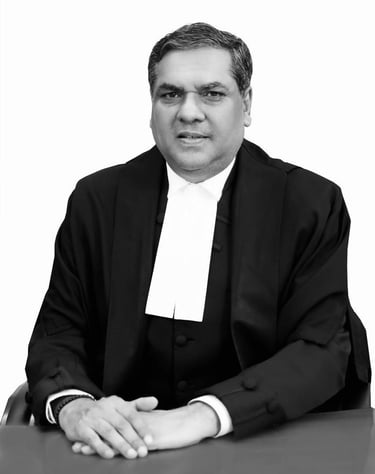The Delimitation Dilemma in Manipur: Balancing Representation and Stability
OPINION & ANALYSIS
On March 17, 2025, the Supreme Court of India, led by Chief Justice Sanjiv Khanna, issued a directive mandating the Union government to complete the delimitation exercise in the northeastern states of Manipur, Nagaland, Arunachal Pradesh, and Assam within three months. This order, aimed at redrawing electoral constituencies to reflect demographic changes, has reignited a contentious debate in Manipur, a state already grappling with ethnic strife, political instability, and demographic anxieties. The proposed delimitation, based on the 2001 Census due to the absence of a more recent, reliable dataset, seeks to ensure fair representation but risks exacerbating tensions in a volatile region.


The Context: Manipur’s Fragile Equilibrium
Manipur, a state of 2.8 million people (as per the 2011 Census), is a mosaic of ethnic communities, primarily the Meiteis in the Imphal Valley and the Naga and Kuki-Zo tribes in the hill districts. The state’s 60-member Legislative Assembly is currently divided, with 40 seats in the valley and 20 in the hills, a distribution that reflects historical demographic patterns but is now contested. Ethnic violence between the Meitei and Kuki-Zo communities, erupting in May 2023, has claimed over 250 lives, displaced 60,000 people, and led to the imposition of President’s Rule on February 13, 2025, following the resignation of Chief Minister N. Biren Singh. The Supreme Court’s directive comes at a time when Manipur’s social fabric is frayed, and trust in governance is at a rock bottom.
Delimitation, the process of redrawing electoral boundaries to reflect population changes, is a constitutional necessity under Article 82 and the Delimitation Act, 2002. Manipur’s last delimitation occurred in 1976, based on the 1971 Census, making the current exercise long overdue. The 2020 presidential order rescinding the deferment of delimitation in the northeastern states paved the way for this process, but Manipur’s unique challenges—ongoing violence, contested census data, and fears of ethnic marginalization—complicate its implementation.
Pros of the Delimitation Exercise
• Ensuring Fair Representation: The primary objective of delimitation is to ensure that electoral constituencies reflect current population dynamics, thereby upholding the democratic principle of equal representation. Manipur’s population has grown significantly since the 1971 Census, with uneven growth across regions. The valley, home to the Meiteis, is densely populated, while the hill districts, inhabited by Naga and Kuki-Zo tribes, have seen slower growth. Redrawing boundaries could correct imbalances, ensuring that each constituency represents a roughly equal number of voters. This is particularly crucial in a democracy where representation is tied to population size, as articulated by the Delimitation Demand Committee, which argued that delays violate Article 14’s guarantee of equality.
• Strengthening Democratic Governance: The Supreme Court’s directive offers a pathway to restore democratic governance in Manipur, which has been under President’s Rule since February 2025. As noted in a media report, delimitation could serve as a “political lifeline” by facilitating the establishment of a functioning elected government. An updated electoral map could enhance the legitimacy of future elections, providing a framework for local representatives to address pressing issues like voter fraud and illegal immigration, concerns raised by BJP MP Leishemba Sanajaoba and MLA Rajkumar Imo Singh. Linking voter cards with Aadhaar, as suggested by the Election Commission, could further strengthen electoral integrity, but this requires active state-level coordination that only an elected government can provide.
• Alignment with Constitutional Obligations: The Supreme Court’s order underscores the constitutional imperative to conduct delimitation, especially after the 2020 presidential order lifted the deferment. Advocate Gaichangpou Gangmei, representing the Delimitation Demand Committee, emphasized that the absence of a new presidential deferment under Section 10(A) of the Delimitation Act, 2002, mandates the exercise. Delaying it further risks judicial overreach accusations and undermines the rule of law. Completing delimitation aligns with India’s broader commitment to periodic electoral reforms, as seen in Assam’s successful 2023 delimitation.
Cons of the Delimitation Exercise
• Reliance on Flawed 2001 Census Data: A significant concern is the proposed use of the 2001 Census, widely criticized for inaccuracies in Manipur. Political parties, including the National People’s Party (NPP) and Congress, argue that the census overestimates populations in certain areas, particularly in the hill districts, due to errors in data collection. Another media report noted that 13 parties, excluding the BJP and Congress, resolved to urge the Centre to defer delimitation until these errors are rectified. Conducting delimitation based on flawed data risks skewed representation, potentially reducing Meitei-dominated seats in the valley, as feared by civil society groups, and fueling ethnic tensions.
• Risk of Exacerbating Ethnic Tensions: Manipur’s ongoing ethnic violence, described by the Supreme Court as an “absolute breakdown of law and order,” makes delimitation a potential flashpoint. Meitei leaders, including BJP MLA Rajkumar Imo Singh, have demanded the completion of the National Register of Citizens (NRC) before delimitation to address concerns about illegal immigration, which they claim has altered the state’s demography. Conversely, Kuki-Zo communities fear that delimitation could diminish their representation in the hills. The March 31, 2025, India Today article warned that redrawing boundaries without resolving these conflicts could “ignite Manipur again,” deepening ethnic fault lines.
• Political and Logistical Challenges: The Supreme Court’s three-month deadline is ambitious given Manipur’s volatile situation. The Centre has cited ongoing violence as a barrier to consultations. Political opposition is widespread, with 16 parties, including the AAP, CPI(M), and TMC, passing a five-point resolution on March 25, 2025, opposing the directive. They argue that delimitation is unfeasible until 2026, when a new national delimitation based on the 2021 Census (delayed to 2026) could be conducted. Logistically, the incomplete household demographic survey ordered by the Supreme Court further complicates the process, as does the absence of a functioning state government to coordinate efforts.
The Supreme Court’s Role: A Double-Edged Sword
The Supreme Court’s directive reflects its commitment to constitutional propriety and democratic fairness, but its timing and approach have drawn criticism. The court’s insistence on expediting delimitation, despite the Centre’s concerns about Manipur’s law-and-order situation, risks prioritizing legal formalism over practical realities. The bench’s question—“Where does the government come in?”—when addressing the Centre’s inaction suggests a disconnect between judicial intent and ground realities. However, the court’s broader engagement with Manipur, including extending the Justice Gita Mittal committee’s tenure to oversee relief and rehabilitation and transferring violence-related trials to Assam, indicates a holistic approach to restoring stability.
The directive’s misinterpretation by some media outlets, exacerbated public anxieties. Reports falsely suggested that the court ordered the completion of delimitation within three months, rather than merely seeking a progress report. This miscommunication fuelled Meitei leaders’ demands for NRC implementation and Kuki-Zo apprehensions about marginalization, highlighting the need for clearer judicial communication.
A Path Forward: Balancing Urgency and Caution
The delimitation exercise in Manipur is a high-stakes endeavour that could either strengthen democratic representation or plunge the state into deeper conflict. To navigate this dilemma, a balanced approach is essential:
• Defer Until Stability is Restored: Given the ongoing violence and President’s Rule, the Centre should seek a presidential deferment under Section 10(A) of the Delimitation Act, as suggested by Advocate Gangmei. This would allow time to stabilize Manipur through peace-building measures, such as those overseen by the Justice Gita Mittal committee, before undertaking delimitation.
• Rectify Census Data: The government must prioritize a transparent review of the 2001 Census data, involving all ethnic communities to ensure accuracy. Alternatively, accelerating the 2021 Census (planned for 2026) could provide a more reliable basis for delimitation, aligning with the national exercise.
• Inclusive Consultations: The Delimitation Commission, chaired by Justice Kuldip Singh, should engage with all stakeholders—Meitei, Kuki-Zo, Naga, and political parties—to address fears of marginalization. Transparent consultations can build trust and mitigate ethnic tensions.
• Link with NRC, but with Safeguards: While the NRC could address concerns about illegal immigration, its implementation must be impartial to avoid targeting specific communities. Linking it with delimitation should be approached cautiously to prevent further polarization.
Conclusion
The proposed delimitation exercise in Manipur, mandated by the Supreme Court, is a constitutional necessity that promises fairer representation and stronger democratic governance. However, its reliance on flawed data, potential to exacerbate ethnic tensions, and logistical challenges in a violence-hit state pose significant risks. Manipur stands at a crossroads where a misstep could deepen divisions, while a thoughtful approach could pave the way for reconciliation and equitable representation. The Centre, in coordination with the Supreme Court and local stakeholders, must tread carefully, prioritizing stability and inclusivity over haste. As Manipur grapples with its fractured present, the delimitation exercise must be a bridge to a more united future, not a spark for further conflict.
